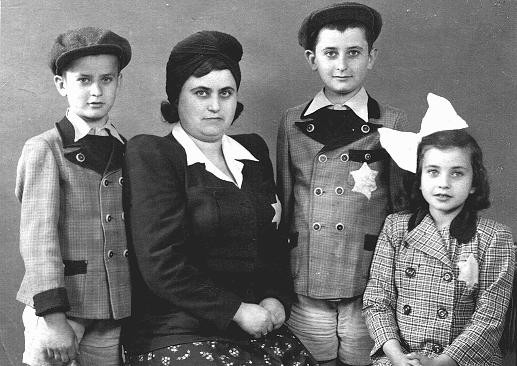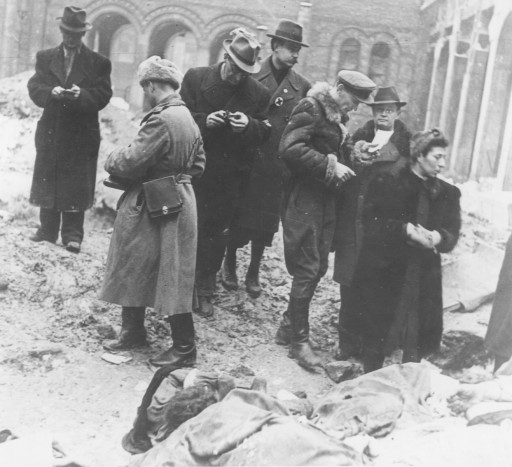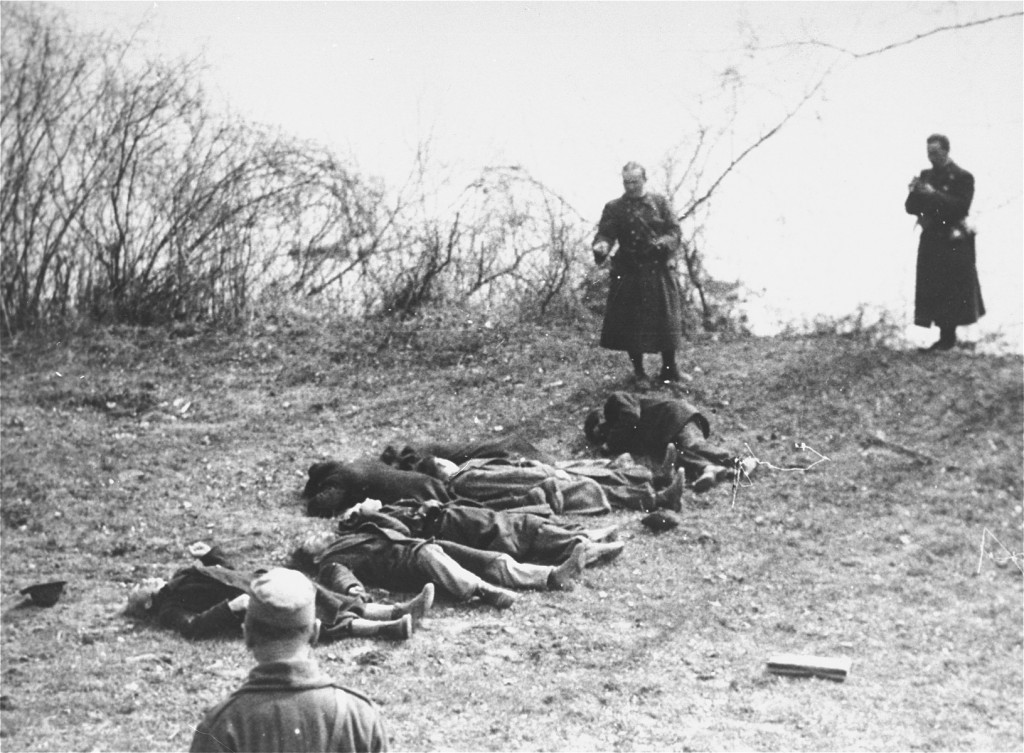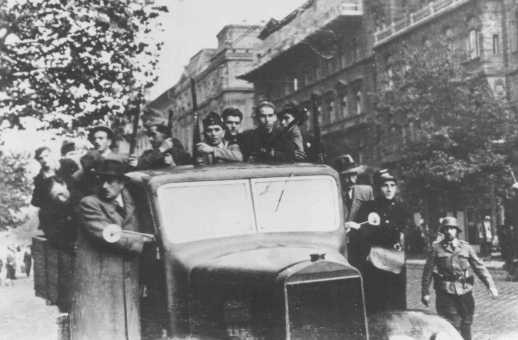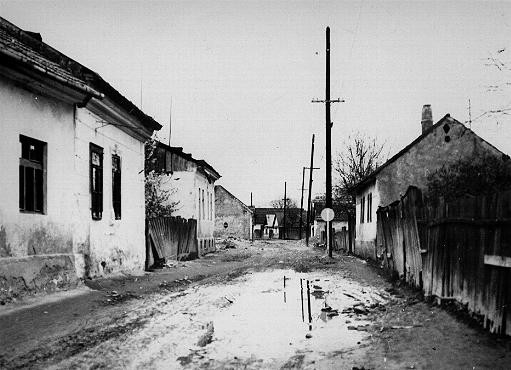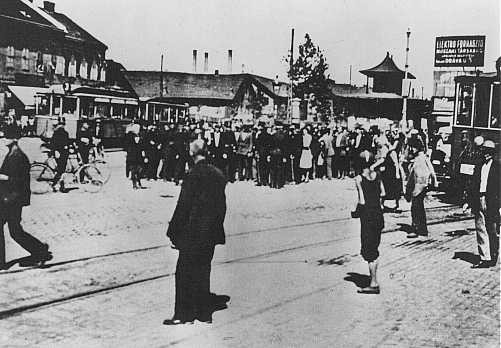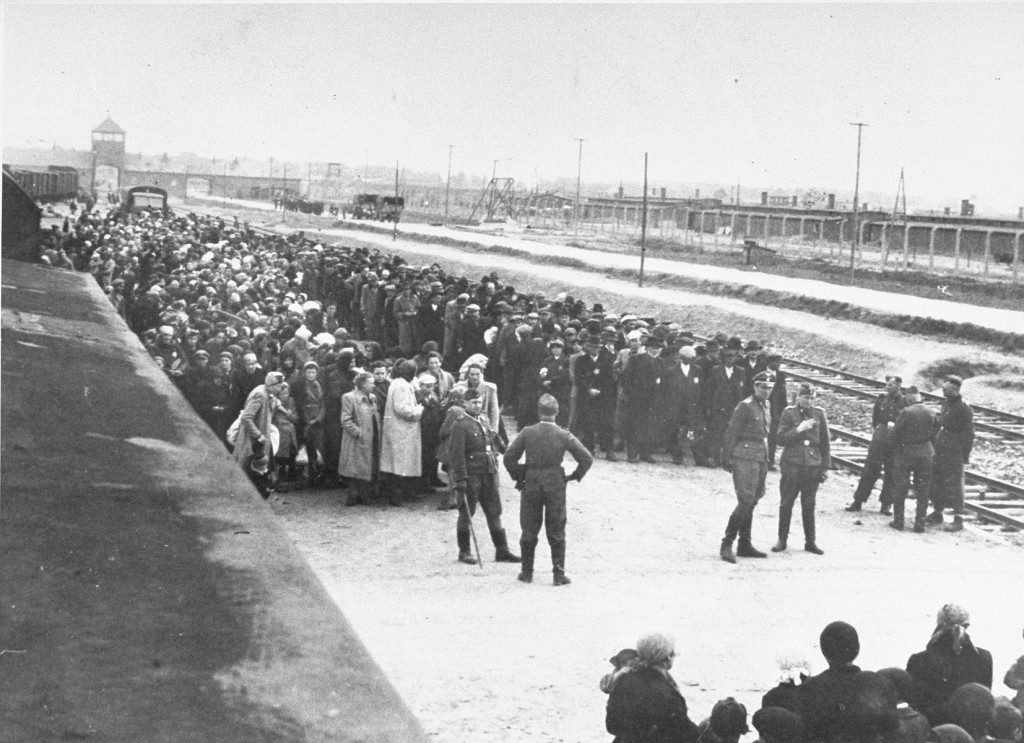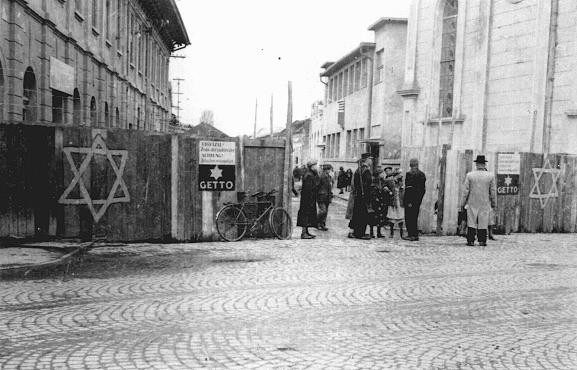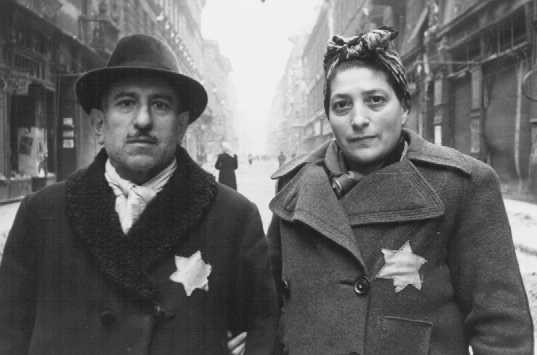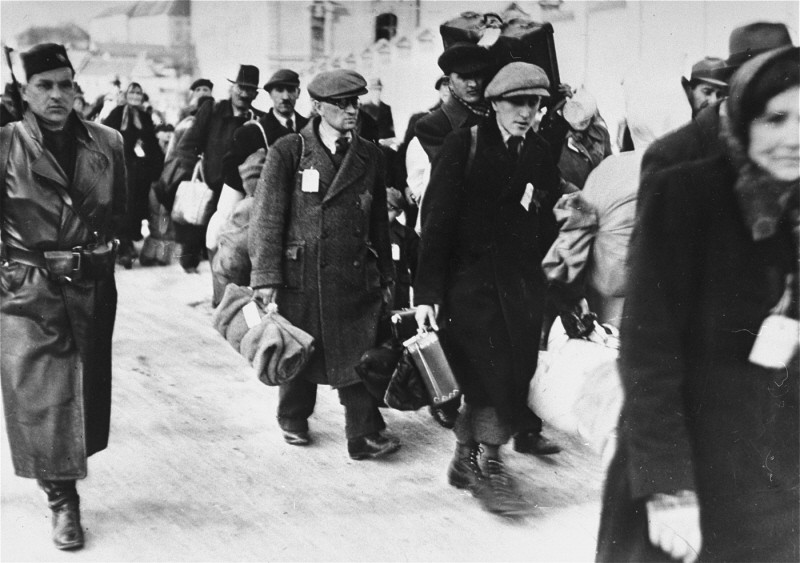
Axis Powers and the Holocaust
Nazi Germany was the leader and principal perpetrator of the persecution and mass murder of European Jews. However, each of the other European Axis powers allied with Germany (Italy, Hungary, Romania, Bulgaria, Slovakia, and Croatia) participated in the Holocaust to some degree. Japan did not participate, and some European Jews even found refuge in Japanese-controlled territory.
Key Facts
-
1
Nazi Germany sought the help of its European Axis allies to carry out the “Final Solution,” the organized and systematic mass murder of European Jews.
-
2
Each of Germany’s six European Axis allies participated in the Nazi “Final Solution” by murdering Jews or by transferring them to German custody to be murdered.
-
3
The number of Jews transferred to German custody or murdered by the governments and forces of Germany’s European Axis allies exceeded 800,000.
Nazi Germany was the leader and principal perpetrator of the persecution and mass murder of European Jews. Each of the other European Axis powers participated in the Holocaust to some degree. These countries were Italy, Hungary, Romania, Slovakia, Bulgaria, and Croatia.
While a member of the Axis Alliance, Japan carried out grave mass atrocities in its occupied territories in Asia and the Pacific. However, the country did not participate in the Holocaust. Some European Jews even found refuge in Japanese-controlled territory, like Shanghai.
All of Nazi Germany’s European Axis allies adopted antisemitic laws similar to Germany’s Nuremberg Laws and legalized the persecution of their Jewish subjects as an enemy race.
By 1942, Nazi Germany and its European Axis allies controlled almost all of the European continent and its population of nine million Jews. Nazi Germany instituted the “Final Solution” with the goal of murdering all the Jews in Europe. And it looked to its European Axis partners to help achieve this goal. The governments of each of those countries participated to some degree in carrying out Nazi Germany’s “Final Solution” policy. Romania and Croatia murdered Jews within their borders or in territories they occupied. Bulgaria, Slovakia, and German-occupied Hungary and northern Italy transferred Jews from areas they controlled to the Germans to be murdered. The number of Jews murdered or transferred to German custody by the governments and forces of these six countries exceeded 800,000.
Nazi Germany’s European Axis allies thus contributed to the deaths of six million people targeted as Jews and to the destruction of Jewish communities throughout Europe. Nevertheless, the “Final Solution” was a Nazi initiative. Nazi Germany was the driving force and principal perpetrator of the Holocaust.
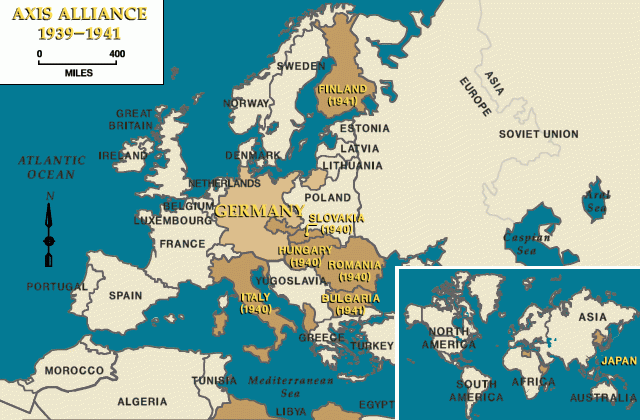
Germany’s European Allies and the Holocaust
Italy
In 1938, Italy’s Fascist government adopted antisemitic race laws modeled on Nazi Germany’s 1935 Nuremberg Race Laws. During the first four years of World War II, Italian forces did not participate in or commit mass shootings of Jews. The Italian government and military also refused to transfer any Jews in Italy or in Italian-occupied territories to German custody. Thousands of Jews fled to Italian-occupied areas, where they found relative safety. Italian authorities even evacuated some Jews to the Italian mainland.
In September 1943, however, German forces occupied central and northern Italy after Mussolini was overthrown and the new Italian government surrendered to the Allies. The Germans installed Mussolini as the head of a puppet government based in the northern Italian town of Salò. With the formal approval of the Salò government and the help of Fascist authorities and militia, the Germans rounded up and incarcerated thousands of Jews.
In all, the Germans deported 8,564 Italian Jews and foreign Jews residing in Italy. Only 1,009 returned.
Hungary
The Hungarian government adopted antisemitic race laws in 1938 and 1941. Following the attack on the Soviet Union in 1941, Hungarian forces in territory annexed from Czechoslovakia herded at least 16,000 Jews into German-occupied territory in Ukraine, where they were shot. In January 1942, Hungarian forces shot several thousand Jews in territory that Hungary had annexed from Yugoslavia. Beginning in 1942, however, the Hungarian government refused repeated German requests to deport Jews residing in Hungary and the territories it had annexed.
After German forces occupied Hungary in March 1944, the Hungarian government agreed to deport the Jews under its control. The Hungarian police rounded up and deported nearly 440,000 Jews to Auschwitz between mid-May and mid-July 1944. More than 300,000 were immediately murdered. In October 1944, the Germans installed a rabidly antisemitic government in Hungary that brutally persecuted and murdered the remaining Hungarian Jews, leading to about 100,000 deaths.
Romania
Antisemitic laws and violence existed in Romania even before it sought to ally with Nazi Germany. After Romanian forces invaded the Soviet Union alongside German forces in June 1941, the Romanians began slaughtering tens of thousands of Romanian and Ukrainian Jews. Romanian authorities also deported many more Romanian Jews to ghettos and camps in Romanian-occupied Ukraine, where they died of starvation and disease. Between 150,000 and 200,000 Jews died in areas under Romanian control.
In 1942, Romania’s leader, Marshal Ion Antonescu, began to fear that the Axis powers would lose the war and that Romania would be punished for its persecution and murder of Jews. Romania therefore did not fulfill its promise to deport its remaining Jews to German-occupied Poland. As a result, some 300,000 Jews within Romania did not fall victim to the Germans’ “Final Solution” program.
Slovakia

Between 1939 and 1941, Slovakia adopted a series of antisemitic race laws that became known as the Jewish Code. In March 1942, Slovakia became the first of Germany’s Axis allies to agree to deport its Jewish population. Between March and October 1942, Slovak police and paramilitary organizations concentrated some 57,000 Jews in Slovakian labor and concentration camps and deported them to German-occupied Poland. Only about 300 survived the war.
In the fall of 1942, Slovakia halted the deportation of its remaining 24,000 Jews. During the Slovak uprising in 1944, German forces killed several thousand Slovakian Jews and deported over 12,000. More than 70,000 Slovakian Jews were deported to German custody in the course of World War II. The Germans murdered more than 60,000 of them.
Bulgaria
Bulgaria adopted its version of the Nuremberg Race Laws in January 1941, which were denounced by many Bulgarians and by the Bulgarian Orthodox Church. In March 1943, Bulgarian military and police forces occupying territories in Greece and Yugoslavia deported 11,343 non-Bulgarian Jews from these areas to German-occupied Poland. Practically all of them were immediately murdered at Treblinka. The Bulgarian government’s plan to deport Bulgarian Jews evoked protests and widespread opposition. In May 1943, the Bulgarian government expelled 20,000 Jews from Sofia to the countryside, confiscated their assets, and placed the men in forced labor camps. The Bulgarian government did not deport any Jews within Bulgaria to German custody. Consequently, nearly all Bulgarian Jews survived World War II.
Croatia
The Independent State of Croatia came into existence on April 10, 1941. Within three weeks, it began persecuting and incarcerating the Croatian and Bosnian Jews under its control. Croatian Ustaša forces began killing Jews in the summer of 1941. Croatian authorities killed about 20,000 to 25,000 Jews and deported some 7,000 Jews to German custody.


